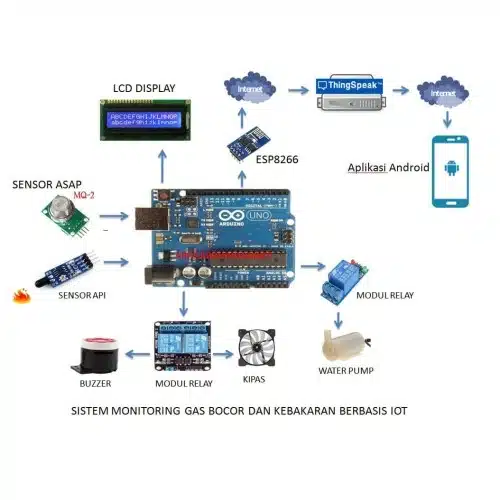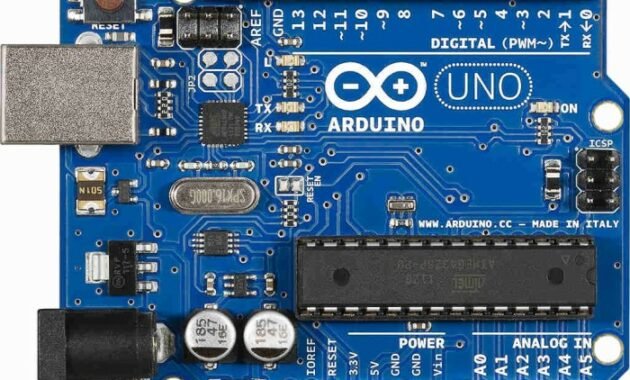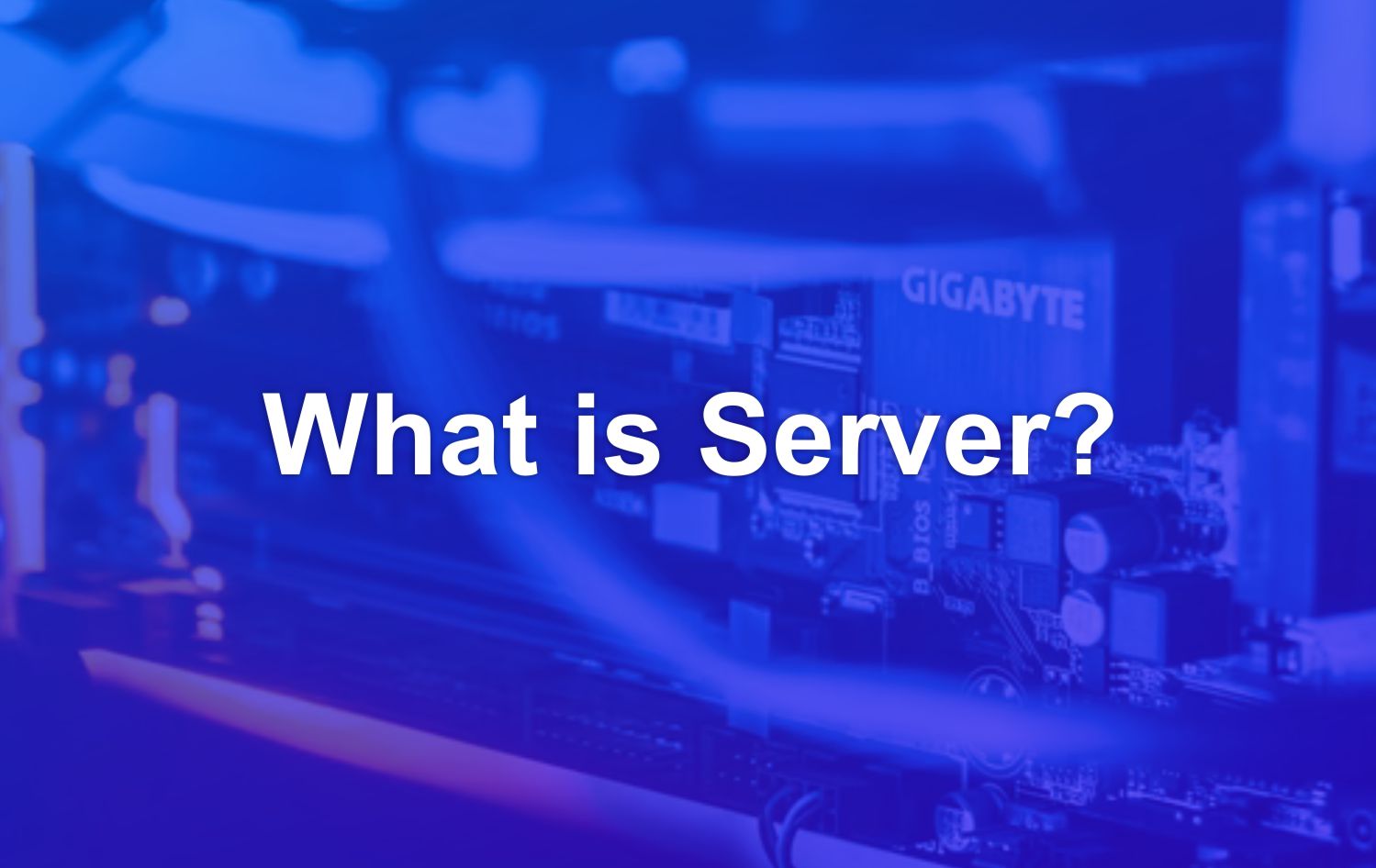Microcontroller is? Understanding what is a microcontroller according to experts Types of Microcontroller Components and Functions
In the field of computers and electronics, there is a chip called a microcontroller. Many people misinterpret that this chip is the same as a microprocessor, namely the CPU in a computer. In general, a microcontroller is a chip that contains all the components and functions of the CPU.
For convenience, this chip is called a mini computer because it has all the features and components such as RAM, ports, and more. However, the microcontroller has process and work limitations. Even though it is more practical, its application is only for specific work, not general like a normal computer or laptop.
What is a Microcontroller?
Microcontroller is a mini computer device (micro) which is packaged in a single IC (Integrated Circuit) chip and has certain operating programs in it. The components on this microcontroller are almost similar to an ordinary computer (PC).
In addition to having a Central Processing Unit (CPU), the microcontroller is also equipped with RAM, ROM, and input and output devices (IO ports) that you can program according to your needs.
The use of this microcontroller is generally applied to devices that require automatic control such as car engine controllers, medical devices in hospitals, and also other electronic equipment.
Some users call this device the name Embedded Microcontroller. This is because it is caused by the position of the microcontroller which is an embedded system, namely being a part of a larger system device.
This microcontroller device will only function if it has been filled with a certain command program. The following is a variety of microcontroller definitions according to experts (experts).
What Is a Microcontroller? Expert Opinions and Definitions
The following is the definition of a microcontroller according to experts which can be used as a reference. In general, they all refer to the same object and concept.
- Microcontroller According to Chamim
Microcontroller is a computer system where some or all of the elements are in an IC or integrated circuit. In general, this is a specific computer system that performs certain tasks.
- Microcontroller According to Setiawan
Microcontroller is an IC with a high component density composition. All parts of the microcontroller are on one chip which consists of CPU, ROM, RAM < input output, timer, and interp controller.
- Microcontroller According to Agus Bejo
Microcontrollers are integrated circuits with the capability to be programmed by erasing and rewriting several times.
Microcontroller Components:
This mini computer device has basic components that form a unified system. The structures that form the microcontroller components are interrelated to be able to receive program commands from their users. What are the components? Here’s an explanation.
- CPU
- RAM and ROM
- Port Serial (Serial Port)
- Timers and Counters
- Port INPUT / Ooutput
- Special Functioning Block
- Interrupt Control
- Analog to Digital Converter
- Digital to Analog Converter
Different Types of Microcontrollers and Their Features
The next discussion is about the type of microcontroller. Check out the following list to find out more about the correlation between the microcontroller and the Arduino device.
- Arduino microcontroller
Arduino microcontrollers are commonly available, so it’s not a hassle to find them. As a user, you can use this chip for simple but repetitive work. Functions also include a timer and counter so work can be set.
- Atmega8535 microcontroller
The ATmega8535 microcontroller uses a fairly complex chip configuration. On the other hand, its function is still able to improve control efficiency, especially if it requires quite heavy work. You can get these chips from manufacturers or authorized agents who are free to circulate.
- Atmega16 microcontroller
The atmega16 microcontroller is a high-capacity chip. Manufacture specifically to support certain work. Users only need to make settings according to their needs and then control them so that they work effectively.
- AVR microcontroller
Avr microcontroller is a type of chip that runs on one clock. You will easily find this type because it is often used. In addition, its application is also flexible for linear work functions that control a tool.
Understanding the Functions of Microcontrollers
- Oscillation Generator
Furthermore, the function of the microcontroller is as a flip-flop and generator of oscillations. This work does not need a complex system because it is quite an efficient and simple program. For that purpose, you use a controller chip instead of a processor.
- Timers and Counters
The function of the microcontroller is a timer and counter. This chip is able to do work according to the time and period given.
- Converter
Another function is the converter, which converts analog to digital. The incoming input is analog and then converted to be compatible with digital system processes.
- Encoder dan Decoder
The microcontroller also has the role of encoding the input data into a number data using a certain format. In addition, it can also act as a tool to receive binary input and activate one of the outputs according to the binary sequence.
- ADC ( Analog Digital Converter )
The role of the microcontroller as an ADC (Analog Digital Converter) is to convert (convert) analog input signals (from external input devices) into digital input signals.
In addition, the ADC function can also be used for communication between microcontrollers and external devices (sensors) that have output signal waves in the form of analog signal waves.
- Flip Flop
The role of the microcontroller as a flipfup is to change the current with an input signal on one or several control inputs which will be converted to only one or two outputs.

The Advantages and Disadvantages of Microcontrollers in Different Applications
From what has been described, the microcontroller is very suitable for specific and simple work. This chip is often used in the industrial, automotive, robotic, communications, and computer fields. In addition, microcontroller chips are also found in electronic devices and custom-made devices. Here are the advantages and disadvantages:
Advantages / Strengths:
- Simple operation and easy to learn.
- Pins in the microcontroller can be programmed multifunction (various commands)
- The time needed by the microcontroller to execute a command is very fast.
- Can act as a microcomputer independently without the need for other additional digital components
- Cost-effective, this is because the microcontroller has a complete and multifunctional integration.
Disadvantages / Weaknesses :
- CPU capability that is not too high (Low) in processing data
- It has small RAM and ROM
- Can only accept simple program commands
- The ability to execute an order at the same time is very limited
Microcontrollers and Microprocessors: Comparing Their Features and Functions
You will understand this topic when you know the difference between microcontroller and microprocessor. The two are related but much different.
- Component
Microcontroller is a CPU with completeness on one chip. In terms of components, you’ll find everything on your computer integrated. Because it is so small, you may need a special tool for direct checks.
Conversely, a microprocessor is a chip for processing. Its task is limited to processing the input data according to the tasks and commands. After that, the output or output is given to another device. On a computer, input comes from direct commands and then the results appear on the display.
- Function
The function of the two is also different, namely the microcontroller focuses on control and the microprocessor is only for processing. You can do anything with the help of a processor as long as it is capable of being processed. In contrast, the controller has only limited inputs and functions. The task is more efficient, namely doing something repeatedly.
- Capability
In terms of capabilities, microcontrollers are smaller and not chips for complex work. You can easily program compatible with this chip. Its capabilities are in accordance with the components and capacities of the IC constituents.
On the other hand, processors are made for general, complex, and large-scale tasks. However, the memory that is used separately requires components and other devices that are connected for optimal performance. The processor cannot work alone because there must be input before processing the data.
- Cost
For cost, both have relative price. Although smaller and simpler, microcontrollers require high costs to make. Imagine combining all the components for normal functioning on a single chip. Conversely, processors also need high costs when they are made to be able to support large capabilities.
Here is a table comparing the differences between microcontrollers and microprocessors:
| Aspect | Microcontroller | Microprocessor |
|---|---|---|
| Function | Embedded systems and real-time applications | General-purpose computing |
| Architecture | Integrated CPU, memory, and I/O peripherals | Only CPU is integrated; memory and I/O peripherals are external |
| Processing speed | Typically lower, but optimized for specific tasks | Typically higher, but not optimized for specific tasks |
| Power consumption | Typically lower due to integrated components and optimized processing | Typically higher due to larger size and higher processing power |
| Development cost | Typically lower due to integrated components | Typically higher due to need for external components |
| Development time | Typically shorter due to integrated components | Typically longer due to need for external components |
| Cost per unit | Typically lower due to simpler design and integrated components | Typically higher due to more complex design and external components |
| Application examples | Home appliances, automotive systems, medical devices, industrial control systems | Personal computers, servers, mobile devices, gaming consoles |
| Programming languages | Assembly language, C, and other high-level languages | High-level languages such as C, C++, Java, and Python |
| Instruction set | Usually smaller and optimized for specific tasks | Usually larger and more general-purpose |
| I/O interface | Integrated I/O interfaces, including analog and digital inputs and outputs | Separate I/O interfaces, including analog-to-digital converters, digital-to-analog converters, and other interfaces |
Thus a series of information regarding the meaning of what is a microcontroller and its component structures, types, functions and advantages and disadvantages that we can describe.



